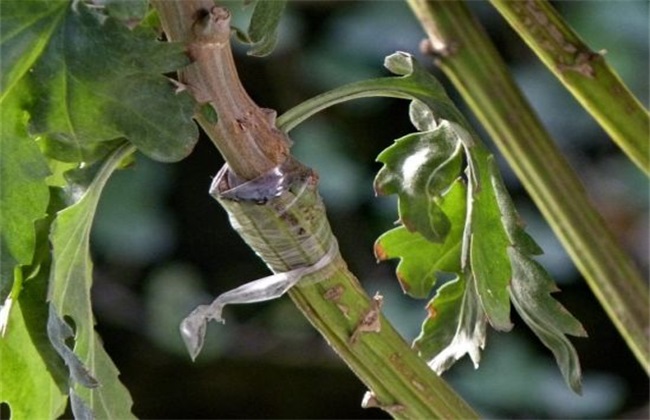Production and Cultivation Management of Edible Fungi
The production and cultivation management of edible fungi should follow the following principles: first, to ensure the safety of raw materials, including sawdust, cottonseed hull, wheat bran, crop straw, soil covering materials and various added ingredients as culture substrates, and the raw materials contaminated by miscellaneous fungi, the contaminated parts should not be reused for cultivation to prevent the accumulation of harmful components. Second, the environmental hygiene and water quality standards of the selected cultivation sites should meet the environmental and water quality requirements of food production, and the water directly sprayed on the mushroom body should meet the drinking water standards; third, the prevention and control of diseases and insect pests and the treatment of production and processing environment should be carried out, and direct spraying of pesticides to the mushroom body should not be allowed. When the medicament has to be used, the biological reagent with low toxicity and high efficiency should be selected, and the time of using the reagent and the dose should follow the standard of safe use of pesticides. Space disinfectants promote the use of ultraviolet disinfection and 75% alcohol disinfection. The specific measures are as follows:
1. The selection of the surrounding environment of the cultivation field. The cultivation field of edible fungus should be selected far away from the place that may cause pollution, the surrounding environment meets the requirements of food hygiene, has no harm to human health, and there are no pollution sources and dusts. more attention should be paid to keeping away from densely populated settlements and trunk roads, and to prevent pollution caused by harmful waste gas, waste water and excessive crowd activities.
2. The choice of topography and landform. The ideal cultivation field of edible fungi should be in the places where the north faces south, the terrain is open, the water source is clean and the cultivation resources are rich, which is beneficial to the circulation of air and the growth and reproduction of aerobic edible fungi.
3. The choice of raw materials. The existing artificial cultivation of edible fungi are saprophytic fungi, using agricultural and forestry scraps as the main raw materials to prepare the medium for cultivation. The selection of pollution-free raw materials is an important basic link to prevent the pollution of edible fungus products. for those who use sawdust as the main raw material for cultivation, the safety of raw materials should be tested in advance. If pesticide residues exceed the standard, water immersion and fermentation can be used to reduce the residue content. When dung grass is used as the main raw material, there are many chances of pollution, such as pesticide residues, heavy metal cadmium and so on. The relevant components in various raw materials should be tested before cultivation, and the raw materials with low harmful components should be selected as the culture medium.
4. Control of raw material processing and preparation process. Strictly control the processing environment so as not to be invaded by harmful substances in the process of raw material processing, for example, in the process of processing and crushing, it is necessary to prevent the mixing of harmful oil and wood chips containing aromatic tree species; all components of the culture medium should be safe raw materials and should be prepared strictly according to the formula of the culture medium, and ingredients that they think can increase production can not be added at will, such as chemical fertilizers, nutrients, etc., and the tools and machinery used should be safe and sanitary appliances.
5. Control of cultivation varieties and cultivation patterns. At present, there are nearly 50 species of edible and medicinal fungi that can be cultivated artificially, and there are nearly 100 species that can be domesticated into artificially cultivated species. Because the suitable temperature, humidity and growth rate of mycelium growth are different, and the decomposition rate and assimilation ability of external substances are also different, some varieties have strong enrichment ability to some metals. some varieties produce formaldehyde in their own metabolism. If the products have special requirements for some ingredients, the nutritional and metabolic characteristics of various varieties of edible fungi should be considered. Pleurotus ostreatus is easy to accumulate heavy metals, and the enrichment ability is different among different varieties. The correlation between cultivation patterns and pollution can not be ignored. For the types of soil-covering cultivation, the safety of soil-covering materials should be controlled.
6. Control of cultivation and management process. It is mainly the quality control of water quality and the hygiene of harvesting utensils, the water quality directly sprayed on the fruiting body must meet the drinking water standards, and the water quality of soaking bacteria bags must at least meet the drinking water standards of livestock and livestock. For collecting appliances should meet the hygiene requirements of food raw materials, including health and health of harvesting personnel, special gloves should be worn when special kinds of harvesting are carried out.
Related
- Fuxing push coffee new agricultural production and marketing class: lack of small-scale processing plants
- Jujube rice field leisure farm deep ploughing Yilan for five years to create a space for organic food and play
- Nongyu Farm-A trial of organic papaya for brave women with advanced technology
- Four points for attention in the prevention and control of diseases and insect pests of edible fungi
- How to add nutrient solution to Edible Fungi
- Is there any good way to control edible fungus mites?
- Open Inoculation Technology of Edible Fungi
- Is there any clever way to use fertilizer for edible fungus in winter?
- What agents are used to kill the pathogens of edible fungi in the mushroom shed?
- Rapid drying of Edible Fungi



